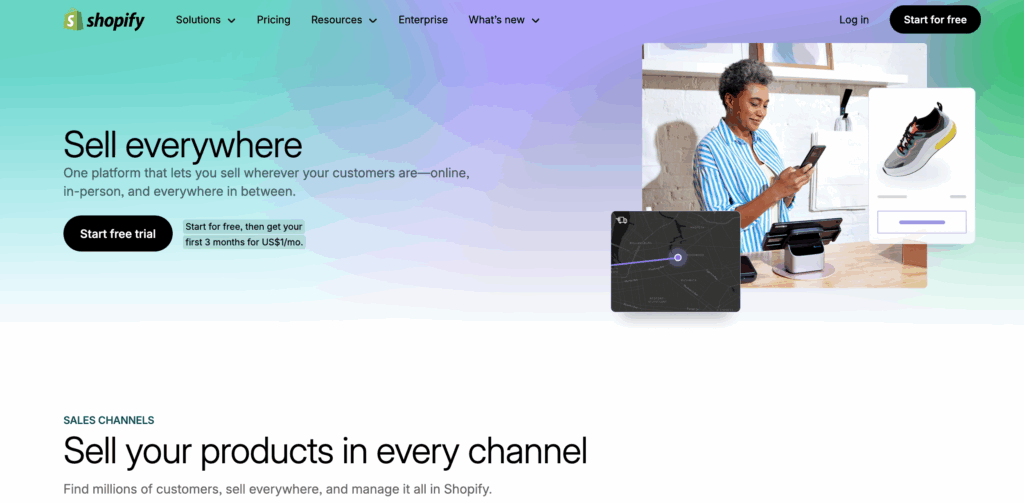
A functional Shopify store’s monthly cost is more than just its subscription fee. A realistic budget for an operational, growing business typically ranges from $50 to $350+ per month. This investment covers your plan, essential apps, and transaction fees, forming the foundation of your online business. Understanding this breakdown is crucial when evaluating ecommerce solutions like BigCommerce, Wix, or WooCommerce.
Evaluating Your Ecommerce Platform Investment
Choosing an ecommerce platform is a strategic financial decision. While Shopify is a leading option, its total cost of ownership should be compared against alternatives based on your business size, technical skill, and growth ambitions. The right platform balances upfront affordability with the features needed to scale.
- Subscription & Base Cost: Shopify‘s plans start at $39/month (Basic), scaling to $399/month (Advanced). This is your fixed operational cost. Competitors like BigCommerce and Shift4Shop offer similar tiered pricing, often including features that Shopify charges extra for via apps.
- Transaction & Payment Processing Fees: This is a critical variable cost. If you avoid Shopify Payments, additional transaction fees (0.5%-2.0%) apply. Credit card rates start at 2.9% + 30¢. Unlike open-source platforms like WooCommerce or PrestaShop, where you choose your payment gateway freely, SaaS platforms often have built-in fee structures.
- Apps & Integrations: Few stores run on native features alone. Budget for essential apps for email marketing, SEO, and reviews ($10-$50/month each). This is where Shopify‘s cost can increase but also where its vast app store outperforms more limited ecosystems like Squarespace or Volusion.
- Theme & Design Costs: While free themes exist, a premium theme ($180-$350 one-time fee) is a common upfront investment for professional customization and conversion optimization. This contrasts with platforms like Wix or Weebly, which are design-forward but may lack the deep ecommerce functionality of Shopify or Magento.
- Scalability & Future Costs: Your needs will evolve. Enterprise solutions like Salesforce Commerce Cloud or Magento entail significant development costs but offer unparalleled customization. Shopify scales smoothly with plan upgrades, while a platform like BigCommerce includes more advanced features in its mid-tier plans, potentially offering better long-term value for some businesses.
FAQs
What is the real monthly cost of a basic Shopify store?
Beyond the $39 Basic plan, expect to pay for 2-3 essential apps (~$30/month) and credit card fees. A realistic monthly estimate for a new, active store is between $70 and $120 before ad spend.
How do Shopify monthly fees compare to BigCommerce?
Their subscription fees are directly comparable. However, BigCommerce often includes features like abandoned cart saver native to its plans, which could reduce your reliance on paid apps compared to a similar-tier Shopify plan.
Are there any hidden fees with Shopify?
The main “hidden” fee is the additional transaction fee charged if you do not use Shopify Payments. Other costs to anticipate are premium apps and potential developer fees for customizations beyond the theme editor.
Is WooCommerce cheaper than Shopify in the long run?
WooCommerce itself is free, but you must pay for hosting, security, a premium theme, and extensions. For a store requiring similar functionality to a Shopify store, the total cost can be comparable, but WooCommerce requires more hands-on technical management.
What is the cheapest way to run an online store?
For a truly minimal budget, a platform like Shift4Shop (which offers a free plan with transaction fees) or a basic WooCommerce setup on affordable hosting can be cheaper initially than Shopify‘s mandatory subscription.
Final Thoughts
Running a Shopify shop requires a clear understanding of both fixed and variable costs. View your monthly investment not as an expense, but as the price for a secure, scalable, and largely hands-off technical infrastructure.
This allows you to focus your energy on marketing and growth, not on managing web servers. By budgeting for the subscription, apps, and fees, you can accurately forecast your business expenses.
Whether you choose Shopify for its ease of use, BigCommerce for its native features, or WooCommerce for its flexibility, the key is to select the platform that offers the best value and growth potential for your specific business model.